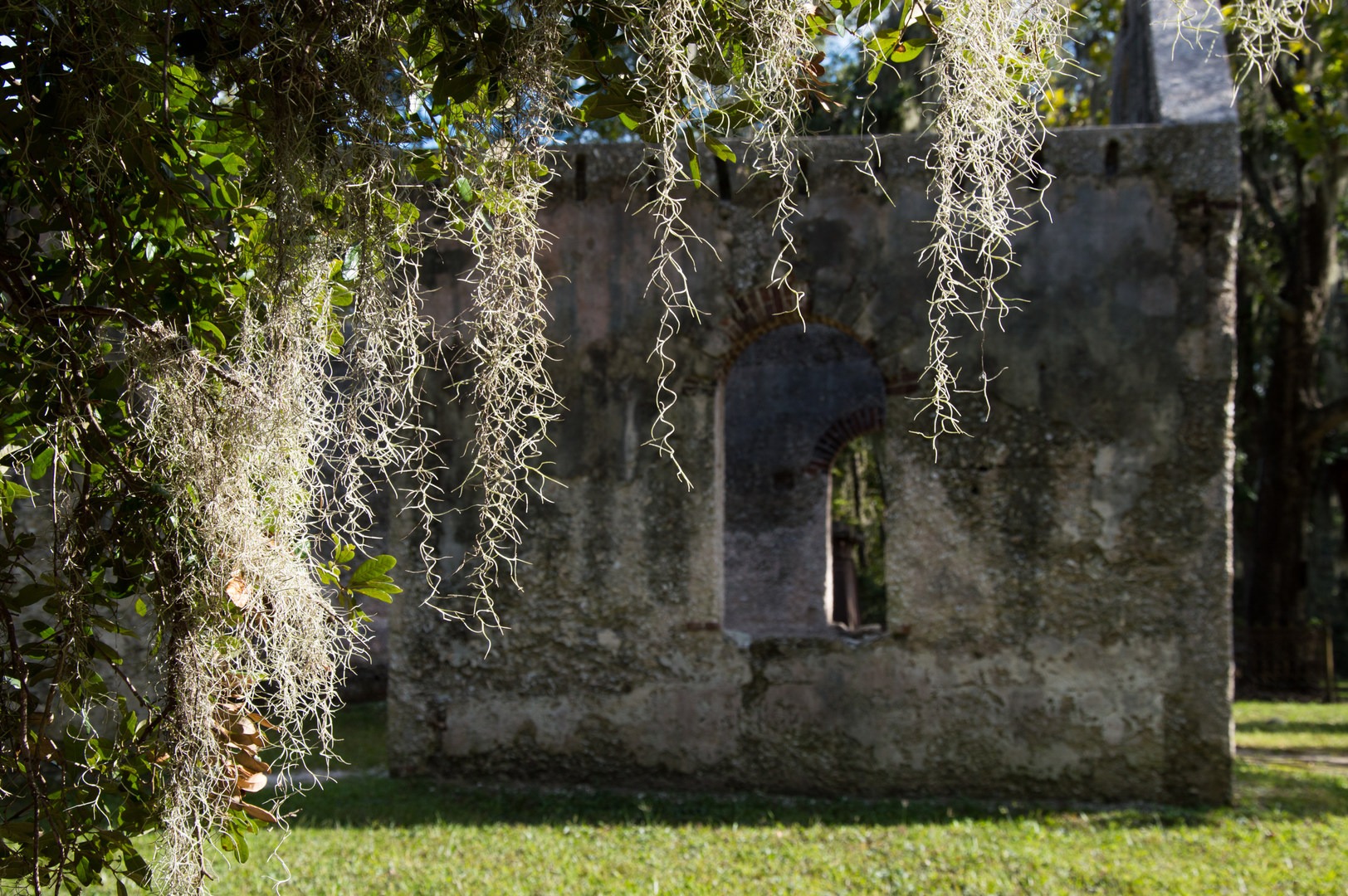Located just off a country road outside Beaufort, South Carolina, is an eerie remnant of the state's long history. A modest church building was erected here in the mid 1700s. Almost none of the wooden structure remains, but walls built of tabby--seashells plastered together--still stand like the ghostly white exoskeleton of a long-gone congregation. These walls have withstood two wars fought on the island, several forest fires, and all other tests of time since South Carolina was a colony of Great Britain.
The long history of this church is not well known, and little information is available on site, but it likely served many purposes and saw much strife during more than 100 years of active use on Saint Helena Island.
Called a Chapel of Ease, it was built as an auxillary of the primary parish of Saint Helena, located farther out from Beaufort so rural planters could more easily attend services. It was used as such until the Civil War in 1861, when Union forces took over the island and evacuated the ruling population. Slaves were left in semi-freedom until President Lincoln's Emancipation Proclamation made their liberty official in 1863. During the time in between, soldiers and Northerners coming to educate those left on the island used the church for shelter. After the war, a Methodist group of freedmen met there as a church once again, but a forest fire destroyed most of the structure in 1886, and it has remained in ruin ever since.
All that stands today are the tabby walls and patches of clinging plaster, but the layout of the church is still preserved. One can imagine where pews and a pulpit once stood more than a century ago. In the church yard, a leaning and rusty iron fence surrounds some old trees and faded gravestones. A small auxillary building made of stone and brick stands on the edge of the grounds, but it appears younger than the original chapel structure. Walking among the ruins and finding clues to their uncertain past makes an enticing challenge for any history buff, amatuer or professional. Even a casual passersby should make a quick stop to admire this relic of colonial times and imagine what life on the island must have been like for those who used this chapel.





















Comments
Further, Jesse, I studied this structure. Felt the “tabby,” walked and examined windows. Counted bricks. Studied for hours. Then returned to vacation rental on harbor island next door and for first time, I penciled and charcoaled an image in my mind onto paper.
Usually, or so I thought, I need image reflection in actual form.... but this was architecture at its finest with haunting simplicity and an oh my God. That’s the chapel of ease response.
Art should move you. This place is art.
Sign In and share them.